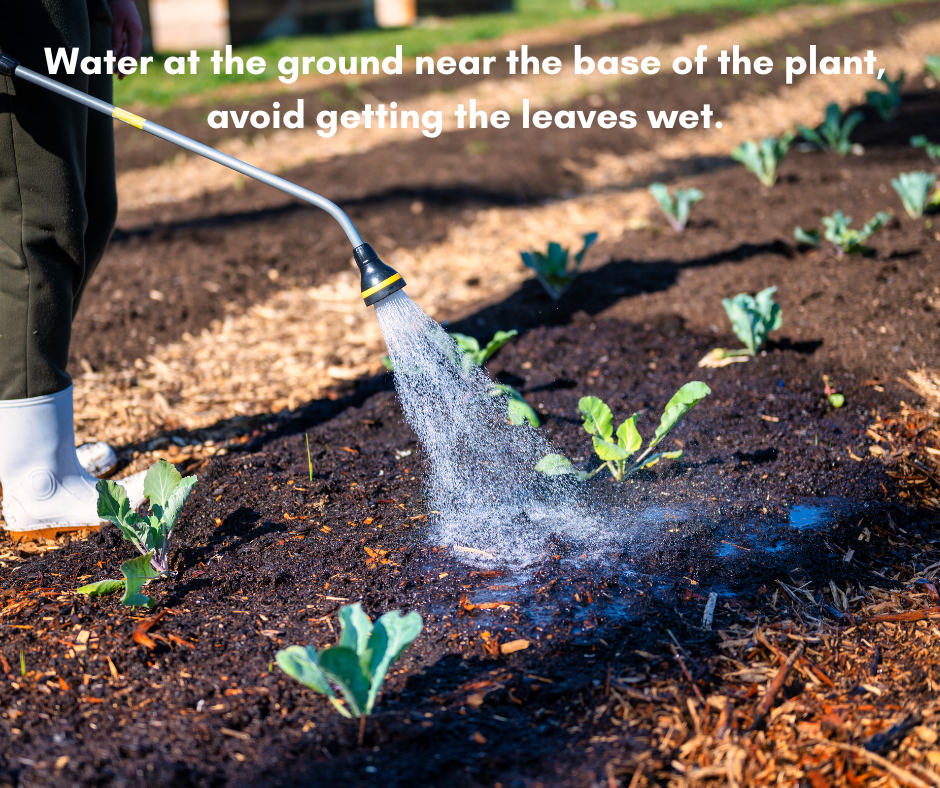How to Water Your Garden During a Drought: Deep Watering for Strong, Resilient Plants
When I was a child, one of my very first chores was watering the garden. I remember following instructions, spraying the hose where I was told, but I never really understood why it mattered so much or what “watering deeply” even meant.
Fast-forward to today, and I now know that proper watering is one of the most important steps in growing healthy plants, especially during a drought. With the right technique, you can encourage strong, healthy root systems that help your garden withstand heat, dryness, and stress.
Here’s how to water wisely when every drop counts.
What Does “Watering Deeply” Mean?
There’s no hard-and-fast rule, but watering deeply generally means moistening the top 7–8 inches of soil. This ensures that water reaches the deeper roots, where plants store energy and access moisture in dry spells, rather than just wetting the surface.
Why Deep Watering Matters
If you only water lightly and often, plants keep their roots near the surface, making them more vulnerable to drought. Deep watering encourages roots to grow down into cooler, more consistently moist soil layers.
Deep roots = stronger plants, better drought tolerance, and even fewer pests and diseases.
How Much Water Do Your Plants Need?
In normal conditions, the common advice is “1 inch of water per week.” That’s about 0.62 gallons per square foot of garden space.
You can check by placing a shallow container (like a jar lid) in your garden. When it fills to 1 inch, you’ve hit your target.
During a drought: Treat that 1 inch as a minimum. Keep watering until the soil is moist 7–8 inches deep.
How to Water Deeply (Without Waste)
Water slowly. Use a gentle flow so water soaks in instead of running off or forming puddles.
Water in stages. Give your plants about an inch of water, then wait 30 minutes before checking the soil depth. Continue until you’ve reached 7–8 inches.
Track your timing. Once you know how long it takes to water deeply, you can repeat that schedule.
The Best Ways to Water in a Drought
Soaker Hose – Perfect for long, slow watering sessions that penetrate deeply.
Sprinklers – Good coverage, but keep an eye out for overwatering leaves in hot, humid conditions.
Hose – Place at the base of plants, preferably on a rock or board to avoid soil erosion.
Watering Can – Great for targeted watering and checking individual plant needs.
How Often Should You Water?
Cooler months: Once a week may be enough.
Hot, dry summer: 2–3 times per week.
New seedlings: Daily (or twice daily in extreme heat) until established.
Sandy soil: More often; drains quickly.
Clay soil: Less often; holds water longer.
Pro tip: Enriching soil with compost helps all soil types retain the right amount of moisture. Compost can be purchased or use leaf mulch and grass clippings. Pine needles are great for woody shrubs, too.
Mulch to Maximize Moisture
One of the simplest ways to make your watering efforts last longer is to mulch your garden. Apply a thick layer of straw, shredded leaves, or wood chips to:
Reduce water evaporation
Keep soil temperatures cooler
Minimize watering frequency
Final Thoughts from the Garden
Learning to water deeply isn’t just about keeping your plants alive. You want to give them the best chance to thrive, even in tough conditions. Once you start watering deeply, you’ll notice stronger plants, fewer stress symptoms, and a healthier, more resilient garden.
Subscribe to Petals & Potager to get more garden tips, freebies, and inspiration delivered straight to your inbox. Together, we’ll keep your garden thriving.
With love from Lisa & Zach,
Petals & Potager

